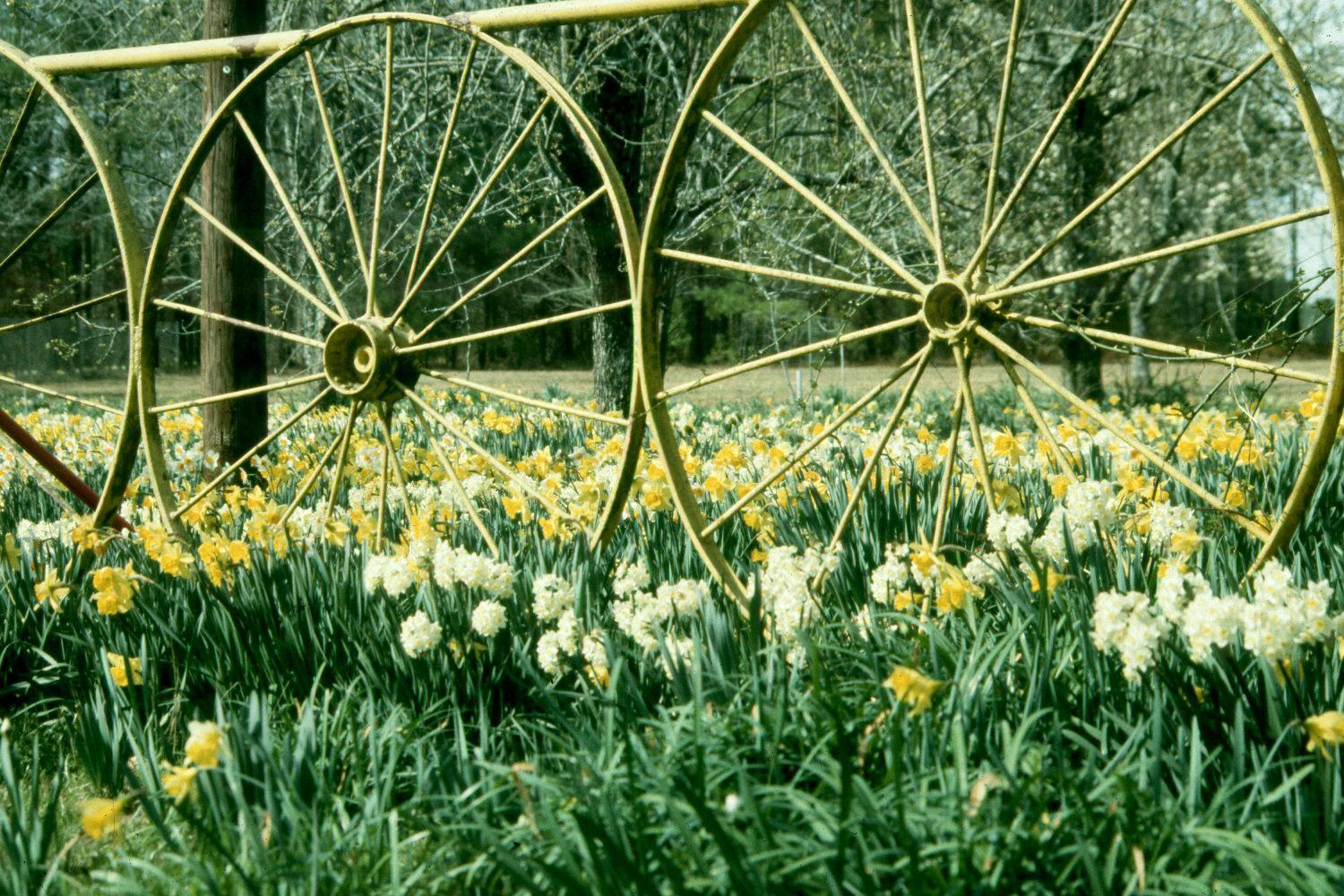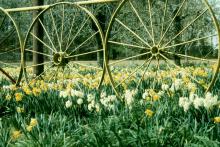Information Possibly Outdated
The information presented on this page was originally released on December 16, 2002. It may not be outdated, but please search our site for more current information. If you plan to quote or reference this information in a publication, please check with the Extension specialist or author before proceeding.
Fall-planted bulbs bring Spring cheer
By Norman Winter
MSU Horticulturist
Central Mississippi Research & Extension Center
The humble daffodil gives cheer as hearty messengers of spring's return and is among Mississippi's finest plants. But you'd better be planting these flowers of the genus Narcissus now if you want gorgeous blooms this spring.
October and November are the main bulb planting season, but we can find success by planting them later as well. Many garden centers are even offering specials on these bulbs, so take advantage.
The narcissus is a stalwart garden favorite. Once planted, it continues to grow and multiply in even the most neglected and forgotten gardens. It is an easy flower for indoor forcing and an excellent cut flower to grow in the outdoor garden.
Most people are familiar with narcissi by their common name, the daffodil. There are 12 major divisions of narcissi: the trumpet, large-cupped, small-cupped, Jonquilla, Tazetta, double, Cyclamineus, Triandrus, Poeticus, split-corona, species and wild forms, and miscellaneous narcissi.
Trumpet narcissi produce big flowers perfect for massing. The trumpets, which are longer than the petals, have one flower per stem. Familiar varieties are King Alfred, Golden Harvest and Mount Hood.
The next division is the large-cupped narcissi. The trumpet is called a cup in this division, and it is more than one-third the length of the flower but not as long as the petals. Ice Follies and Fortune fall into this group. The short or small-cupped division is not more than one-third the length of the flower and like those above, have one flower per stem. Birma and Tranquil Morn are popular varieties in this division.
Two of the most popular divisions that naturalize easily in the South are the Jonquilla and Tazetta. The Jonquilla are the only true Jonquils that are cultivars of the Narcissi Jonquilla. They are multi-flowered with an absolutely wonderful fragrance. Some of the old time favorites are Campernelle, Trevithian, Suzy and Sweetness.
The Tazetta are multi-flowered with four to eight flowers per stem. Some have double flowers and also are very fragrant. This division includes the paperwhites, Narcissus papyraceus, that got their popularity here in the 1800s. These are exceptional for forcing indoors as well as naturalizing in the landscape. Daffodil growers I have known are partial to varieties like Golden Dawn, Soliel d' Or and Grand Monarch.
Double narcissi have one flower per stem with double petals that do not form a distinct cup. For a recent Southern Garden TV segment, we used Tahiti, an unbelievable yellow with fiery orange, and combined them with Delta Fire pansy. In addition to Tahiti, look for Mary Copeland and Cheerfulness.
Cyclamineus narcissi are small, usually single-flowered narcissi named for their resemblance to the cyclamen bloom. The petals are almost completely reflexed with a pronounced trumpet. February Gold, Tete a Tete and Jenny are well-known favorites.
Triandrus narcissi are also small and perfect for rock gardens and mossy, moist areas. They have two to six flowers per stem, each drooping slightly. The petals are also curved backward like the cyclamineus. Jack Snipe and Peeping Tom and two of the best.
The other divisions are the Poeticus, split-corona, species and wild forms, and miscellaneous. They are no less important than the others to lovers of daffodils and the American Daffodil Society.
Daffodils prefer sunny locations, although open shade will not prove to be a big detriment. For best naturalization, plant in a well-drained area. Raised beds rich in organic matter are perfect for combining pansies and daffodils.
Plant bulbs about twice as deep as they are tall, 5 to 6 inches deep for large bulbs and 3 to 5 inches deep for smaller ones. Spacing 6 to 8 inches apart will allow for increasing in size before crowding.
One mistake many gardeners make in growing daffodils is cutting the foliage after the flowers have diminished. The leaves are vital to next year's bloom. Leave them growing as long as possible, or at least eight weeks.
Purchase plump and firm bulbs. If they give to the touch or feel hollow, then make another selection. Azaleas, camellias, redbuds and dogwoods are all enhanced by the addition of daffodils.




